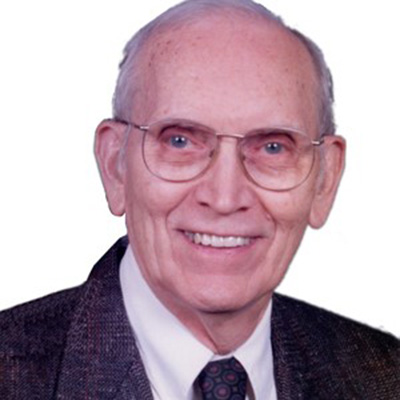In memoriam: John Hoover Hash
John Hoover Hash, who served for more than three decades on the Vanderbilt University Medical Center faculty and had been a member of the American Society for Biochemistry and Molecular Biology since 1965, died June 20 in Nashville. He was 94.

Born Feb. 23, 1929, in Franklin County, Va., the 11th of 12 children, Hash graduated as his high school valedictorian when he was 16. After earning a BS at Roanoke College and then teaching high school for two years, he was drafted into the Army. During the Korean War, he was stationed at Fort Detrick, Md., where biological weapons were being developed —a program he opposed.
Hash earned a Ph.D. in biochemistry from Virginia Tech in 1957 and held a postdoctoral fellowship at Columbia University. He worked at Lederle Labs in New York for six years before Vanderbilt hired him as an assistant professor in 1964.
At Lederle, Hash had discovered an unusual bacteriolytic enzyme produced by the fungus Chalaropsis. At Vanderbilt, he crystalized and and characterized the enzyme as a lysozyme that can kill bacteria by breaking through their tough membranes. He capped his research on antibiotics by editing a volume for the Methods in Enzymology series.
After Hash was appointed associate dean of biomedical science and director of sponsored research at Vanderbilt in 1976, he began helping colleagues secure research funding. He helped write computer programs to extract data from grant records and the VUMC Reporter dubbed him the “godfather of grants” when he retired as emeritus professor of microbiology and immunology in 1994.
Hash was elected a fellow of the American Association for the Advancement of Science in 1966. He was a member of the National Advisory Research Resources Council of the National Institutes of Health from 1991 to 1995.
In retirement, Hash focused on woodworking, pastel and oil painting, reading and travel. His art was eclectic; he painted whatever he liked, for the fun of it. He and his wife traveled to every continent except Antarctica.
He was preceded in death by his wife of more than 62 years, Mary Ann Hash. He survived by three children and their spouses, six grandchildren and two great-grandchildren.
Enjoy reading ASBMB Today?
Become a member to receive the print edition four times a year and the digital edition monthly.
Learn moreGet the latest from ASBMB Today
Enter your email address, and we’ll send you a weekly email with recent articles, interviews and more.
Latest in People
People highlights or most popular articles

Nuñez receives Vallee Scholar Award
He will receive $400,000 to support his research.

Mydy named Purdue assistant professor
Her lab will focus on protein structure and function, enzyme mechanisms and plant natural product biosynthesis, working to characterize and engineer plant natural products for therapeutic and agricultural applications.

In memoriam: Michael J. Chamberlin
He discovered RNA polymerase and was an ASBMB member for nearly 60 years.

Building the blueprint to block HIV
Wesley Sundquist will present his work on the HIV capsid and revolutionary drug, Lenacapavir, at the ASBMB Annual Meeting, March 7–10, in Maryland.

In memoriam: Alan G. Goodridge
He made pioneering discoveries on lipid metabolism and was an ASBMB member since 1971.

Alrubaye wins research and teaching awards
He was honored at the NACTA 2025 conference for the Educator Award and at the U of A State and National Awards reception for the Faculty Gold Medal.
